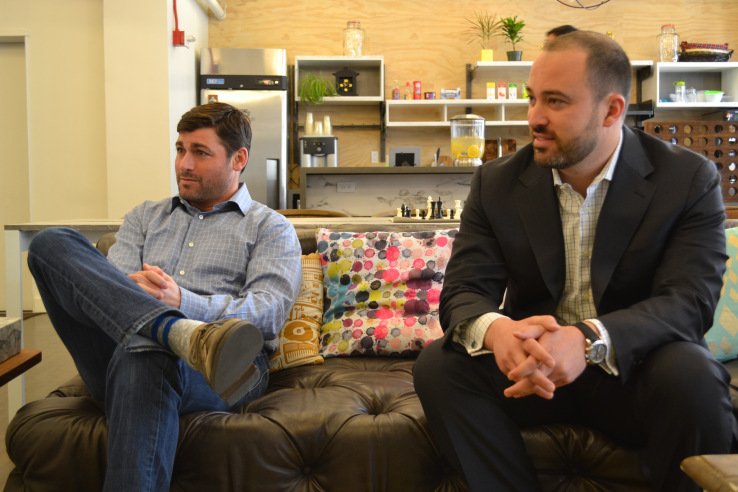Sometimes, it seems like every possible on-demand service that could be created has already come along — and, in some cases, gone away. But Recycle Track Systems (RTS), a two-year-old, New York-based waste and recycling management technology company, serves to remind that there remain plenty of opportunities for startups looking to turn our smartphones into lucrative businesses.
Indeed, while companies have sprung up around everything from on-demand family care to shipping, the waste industry — valued at anywhere from $45 billion to $65 billion when accounting for collection services, treatment and disposal — has largely been left untouched by tech founders.
That’s changing. Already, one company, nine-year-old Rubicon Global in Atlanta, has raised more than $145 million from investors — including private equity king Henry Kravis — to steal away market share from incumbents like Waste Management and Republic Services. Now, RTS is aiming to do the same by making it simple for customers to schedule on-demand pick-ups through its phone app.
A high-tech garbage service may sound ridiculous to the uninitiated. But it’s no joke to customers like WeWork, Whole Foods and SoulCycle that have signed multi-year contracts in exchange for RTS’s flexible pricing options, along with notifications about when a truck has arrived and reports about exactly where their waste is being sent.
Investors are taking the company seriously, too. For starters, RTS is an asset-light business. Instead of purchasing its own trucks, RTS is partnering with a growing number of mid-size, independent haulers that it provides with feature-rich tablets to make their work more efficient — even when they aren’t being used in service to RTS.
Another apparent part of RTS’s appeal is that it’s profitable, though that might change, now that the 17-person company has raised $11.7 million in Series A funding from the Boston-based growth equity firm Volition Capital — money it plans to use to hit the gas. (Notably, Volition was the first outside money into Chewy, a pet supplies company that sold to PetSmart earlier this year in the biggest e-commerce sale to date, ever.)
To learn more, we talked yesterday with RTS co-founder and CEO Gregory Lettieri about the company and the opportunity it’s chasing. Our chat has been edited for length.
TC: Your business is centered around taking the guesswork out of the garbage-collection process. How did you decide this was something you could turn into a business?
GL: I met my co-founder Adam [Pasquale] about 12 years ago. We lived in the same apartment complex in New Jersey. A couple of years ago, I was working as a SVP at Bank of America, building tech portals for traders. Adam is meanwhile four generations in waste recycling; his father and grandfather before him [operated their own sanitation company]. One day, we were on a couch, watching a soccer game, and we got to talking about this idea and I think within 30 days we’d created the company.
TC: Is the idea to sort of complement the waste management services that are out there, or to replace them? Is this a service that’s focused mostly on customers who care about sustainability?
GL: It matters a lot to high sustainability customers, who want to know that their efforts to separate out food waste isn’t [a squandered effort]. They can now see that an organic truck picked up their material and took it to a waste energy facility or to a farm, and we can provide real numbers, not estimates.
We could work alongside [traditional waste vendors]. But there’s no reason to do that. We can compete head-to-head with them and beat them. In this business, you want to own the entire waste stream. That’s when you can affect change. You can train customers: here’s how you divert more, here’s how you get more out of the landfill . . .
TC: Say I’m using a waste service that’s basically fine. Beyond the tracking piece of your technology, why do I stop using my service and start using yours? How does the on-demand piece work?
GL: You want to get rid of something, extra material, anything that doesn’t fit in a garbage bag. WeWork has broken chairs sometimes, broken desks. Throughout its portfolio, especially when it’s remodeling a space, it has materials to get rid of. We pick them up.
TC: How do you charge? One fee for an unlimited number of on-demand pick-ups per month?
GL: We establish yearly contracts, charging so much per month for an office space after we do an audit on the business and establish that it generates, say, 50 bags of garbage in a set amount of time. Everything above that then is extra.
TC: Whose trucks are you using?
GL: Trucks that we don’t own. There are 18,000 mid-tier independent hauling companies in the U.S., and what [we’re telling them is that] we have the technology; we can get these clients. We’re using tech to fill out these routes that already exist. These trucks are traveling seven days a week anyway, but we’re providing them access to business that they didn’t have before. We’re bringing together these independent operators to create our own virtual fleet.
TC: You’re in New York, where Waste Management doesn’t operate anymore because it was too expensive.
GL: They pulled out five-plus years ago because it wasn’t profitable for them. New York is very competitive. There are 120 licensed [waste management] companies. But it’s a great breeding ground for us. We work with 10 operators in New York, and we might add another one to two operators, but that’s sufficient enough to have operators to service the entire city.
TC: Where else are you operating?
GL: Philadelphia and Washington, D.C. We’re also in other markets, including Boston and San Francisco, but we haven’t employed our full approach there.
TC: What does your business look like in those other markets?
GL: San Francisco is a single territory market, for example, so we operate there as a consultant for our East Coast-based clients that have sites in California, like WeWork.
TC: You’re basically overseeing a marketplace. Can you share any metrics with us that highlight your growth to date?
GL: We’d rather not get into our numbers publicly. But we do have two [groups to please]. One is the “generator” as we say in this industry — it’s the customer that’s producing waste, like Whole Foods. Our other customer is the companies that own the garbage trucks.
You need customers, because the more customers you have, the more hauler relationships you have; it’s additional revenue for them. And the more haulers you have, the more access you have to cities and markets.
In some markets, we approach haulers first, then we’re putting salespeople there. In other markets, we have more salespeople and we need more hauler relationships.
TC: There’s also another market you might try tackling eventually. Can you elaborate?
GL: Because we’re able to separate out and track what’s on these trucks, we can turn that material into additional revenue. There’s a $90 billion secondary market for commodities like plastic and cardboard that are taken in big quantities and then sold to [specific] markets in the U.S. and Asia.
For example, right now, some of our customers will have us pick up broken light fixtures or construction materials. Sometimes, they’ll ask us to pick up and handle their electronics recycling. We have relationships with local facilities that will break up the circuit boards and tubes and separate them into different containers and send them out to the appropriate buyers. It’s not a huge part of our business today but it will be as we grow over time.
People are interested in smart cities and smart trucks, and controlling the flow of material and waste is only becoming more important.
– Connie Loizos | TechCrunch

